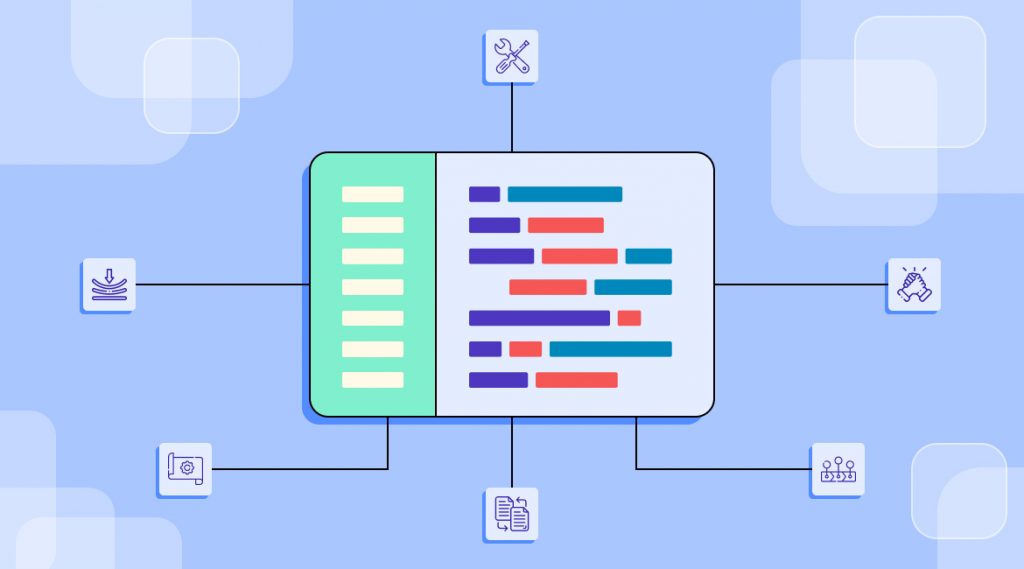Contents
Almost all organizations, large and small, have already implemented or moved towards implementing DevOps support practices to increase productivity and enhance workflows. In all stages of the Software Development Life Cycle (SDLC), DevOps practices promote collaboration between developers and operations teams. Well-established cooperation between development and operations creates a more efficient and reliable delivery process. It results in creating a product of higher quality.
6 Crucial DevOps Adoption Challenges

Although DevOps’ main objective is to automate and integrate, its proper implementation is quite difficult. Implementing new methods or processes or replacing older ones with more contemporary ones has always proven difficult. As an example, IT Outposts experts will address six common obstacles to the adoption of DevOps and provide ways to overcome these challenges. Here are a few of them.
1. Traditional infrastructure to microservices migration
Despite the older infrastructure’s pros, the company will inevitably face stability problems and may struggle with a lack of support, even though it has lasted for many years. In a fast-paced world, organizations that are still using older infrastructure may risk being left behind. The use of infrastructure-as-code coupled with microservices is another step toward continuous innovation in the future as it changes the development process. By adapting quickly, we are able to meet changing market and customer demands.
Older applications can be replaced or modified to work with newer microservices architecture, opening the door to increase the pace of development and innovation. The adoption of microservices comes with some issues, and they need to be managed. A company should have configuration management, automation, and continuous delivery in place before moving to microservices architecture from traditional infrastructure. They are able to handle the increased operational workload that microservices bring. DevOps consulting can guide your company in implementing these essential practices and ensuring a smooth transition to microservices.
READ: Microservices Decomposition Strategy in 2024.
2. Integrating a variety of tools
It is well-known that Continuous Integration is one of the key elements of DevOps, so it’s critical for all the tools to be connected properly to make testing, deployment, and building work together seamlessly as a continuous process. In order to work collaboratively, all tools have to be integrated.
3. Establish more efficient workflows
By looking at the processes and identifying what is working and what isn’t, inefficiencies can be identified. Take a look at the waste areas that are not giving you the right value, where the resources are exhausted. Businesses and organizations may encounter some processes that are resistant to changes, causing unneeded delays. It is essential to realize that software developers are not the only ones responsible for checking that processes work. The goal of DevOps is to make work easier and achieve faster time-to-market by integrating development teams and other IT stakeholders.
4. Separate tools for development and operational teams
Having separate tools in development and operational teams is one of the biggest challenges for DevOps implementation. An important part of making everything work properly is to identify any differences between the two and synchronize them.
5. Main challenges in devops implementation
It appears that the new tools included in the DevOps toolkit will solve any problem. The tools may be readily available, but your staff must be trained on how to use them effectively. It is also essential that these tools meet the security prerequisites and be integrated into the current infrastructure appropriately. A critical priority may be overlooked because of such things.
The success of DevOps is determined by organizational structure and the team. An organization with a proper structure will improve the progress of a team. Rather than focusing on tools, organizations should keep their attention focused on the team structure. The most critical element of any DevOps implementation is the team members. Introducing new tools without proper training will create some severe problems.
6. Resilience to changes
For some team members and other key stakeholders, integrating DevOps can be frightening. You can’t change to DevOps overnight; it’s needs to be a steady and gradual process.
Thus, it will enable the team to benefit from the DevOps culture challenges as they slowly become a part of it, everyone will be able to find their own way to contribute during the development process. Find a small feature or part of an existing application that can be recreated using DevOps principles. The new ways of working will also be adopted by other groups if the team can see the benefits of DevOps in practice. These approaches will help organizations to enter DevOps and continue working within the modern DevOps environment.
How to Overcome DevOps Adoption Challenges
Introduce the right guidance
The solution is good management. The best results are achieved with clear instructions and effective communication. A company’s employees should also be aware of its goals and how to achieve them. Training and guidance are needed to obtain this knowledge.
Improved collaboration
DevOps teams will be more productive with better collaboration. By working together, they can achieve a common goal instead of working for different purposes. In addition to improving visibility, this collaboration also makes it easier to track changes across teams.
Analytics and monitoring
In general, integration tools accumulate and store relevant data in one central location. The integration tools help to create useful reports out of the accumulated data by using specific parameters. We can use the data to provide training information, improve work schedules, understand critical business problems, and so on.
Enterprise-level framework

The challenges of tools integration will be solved by finding a suitable orchestration solution. Currently, there are a variety of tools available on the market that can automate tool environments to provide an enterprise-level framework. As well as supporting multiple diversified features, these tools offer advantages such as an integrated framework.
Conclusion
As we’ve discussed in this blog, a variety of barriers are preventing the successful implementation of DevOps for different companies. For you to overcome these challenges, you will need patience, commitment, and support if you are considering DevOps or trying to improve your organization’s strategy.
For assistance with DevOps or any other questions, contact us. DevOps services are provided by IT Outposts, a company that helps businesses of all sizes achieve perfect internal workflows and optimal performance.

I am an IT professional with over 10 years of experience. My career trajectory is closely tied to strategic business development, sales expansion, and the structuring of marketing strategies.
Throughout my journey, I have successfully executed and applied numerous strategic approaches that have driven business growth and fortified competitive positions. An integral part of my experience lies in effective business process management, which, in turn, facilitated the adept coordination of cross-functional teams and the attainment of remarkable outcomes.
I take pride in my contributions to the IT sector’s advancement and look forward to exchanging experiences and ideas with professionals who share my passion for innovation and success.